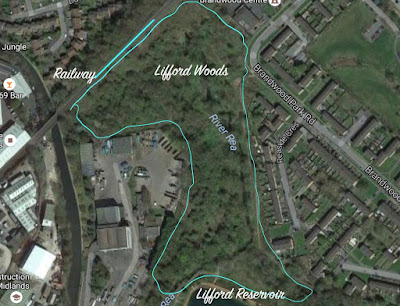Evergreen, conifer or gymnosperm?
 |
| Scots Pine at Highbury Park |
OK the Christmas theme is almost over but there remains a pang of interest in 'evergreens' and conifers at this time of year - and it is only the 10th day of Christmas - and perhaps the only time throughout the year that attention is given, by some, to identification.
Over the past couple of years, during broadleaf dormancy, I have developed an interest in 'gymnosperms' (naked seeds), evergreens or conifers, what we call them somewhat depends on our preferences and how pedantic one might be, perhaps 'evergreen conifers including Larch' is most accurate in this case; and they can provide a welcome distraction from the commercial clubbing we get between October and 25th December.
Whilst all conifers in the Rea Valley are in plantations and not strictly 'woodland' in an ecological sense, they provide an opportunity to get into the field with newly acquired guides and keys to aid identification; often a challenge, especially if the weather is inclement but there is a seasonal and cultural touch alongside to wet the appetite and keep one engaged.
The Pinetum at Highbury Park and the Tree Trail at Cannon Hill Park give us plenty of challenges in terms of ID, although I think we've now cracked them all, however some of the loftier specimens at Cannon Hill provides some uncertainty still.
 |
| Western Red Cedar - (Thuja plicata) at Highbury |
 |
| Western Hemlock (Tsuga heterophylla) at Highbury |
The cones are a great way to identification
Leaves, scales and needles can be problematic, especially when distinguishing spruces, firs or hemlocks, each having short needles.
 |
| Japanese Red Cedar (Cryptomeria japonica) cones and male flower buds |
 |
Japanese Red Cedar at Cannon Hill Park
|
 |
An avenue of Giant Redwoods (Sequoiadendron giganteum) form part of the Pinetum at Highbury
The Highbury Pinetum
Cone of the Giant Redwood (left)
|
|
 |
An odd arrangement of 'couplet' planting can be seen at the Pinetum. Whilst some have perished over the past 20 years, some survive together as in the Korean Fir and Golden Larch, above top, and Caucasian Fir (Abies nordmanniana) and American Arborvitae, (Thuja occidentalis) (above lower)
As with many things biological, classification can be problematic and downright confusing, especially when using a catchall term such as conifer or evergreen or broadleaf; some species are both broadleaf and evergreen such as the evergreen Oak found at Kings Heath Park
 |
| Holm Oak (Quercus Ilex) |
|













Comments
Post a Comment